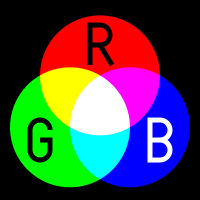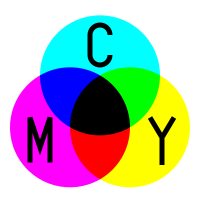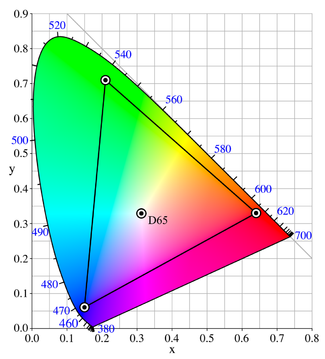Just like our eyes and the computer screen, our eyes have the wider range of colors that we see, while the screen has a little less.
There are times that if we print pictures, it won't print exactly the same set of colors as we see it on screen or in reality. Basically Eyes>Screen>Print
RGB (Red, Green Blue) is for light

While CMYK (Cyan, Magenta, Yellow, Black) is for print

Color Spaces

There are a set of color spaces that can be based upon, the first one is the Lab Color:
Unlike the RGB and CMYK color models, Lab color is designed to approximate human vision.
ProPhoto RGB

is an output referred RGB color space developed by Kodak. It offers an especially large gamut designed for use with photographic output in mind. The ProPhoto RGB color space encompasses over 90% of possible surface colors in the CIE L*a*b* color space, and 100% of likely occurring real world surface colors making ProPhoto even larger than the Wide Gamut RGB color space. The ProPhoto RGB primaries were also chosen in order to minimize hue rotations associated with non-linear tone scale operations. One of the downsides to this color space is that approximately 13% of the representable colors areimaginary colors that do not exist and are not visible colors.

The Adobe RGB color space is an RGB color space developed by Adobe Systems, Inc. in 1998. It was designed to encompass most of the colors achievable on CMYK color printers, but by using RGB primary colors on a device such as the computer display. The Adobe RGB color space encompasses roughly 50% of the visible colors specified by the Lab color space as well as improves upon the gamut of the sRGB color space, primarily in cyan-greens.

sRGB defines the chromaticities of the red, green, and blue primaries, the colors where one of the three channels is nonzero and the other two are zero. The gamut of chromaticities that can be represented in sRGB is the color triangle defined by these primaries. As with any RGB color space, for non-negative values of R, G, and B it is not possible to represent colors outside this triangle, which is well inside the range of colors visible to a human.
Mostly used in Web Designing.
===========
References:
http://en.wikipedia.org/wiki/Color_space
http://en.wikipedia.org/wiki/SRGB
http://en.wikipedia.org/wiki/ProPhoto_RGB_color_space
http://en.wikipedia.org/wiki/Lab_color_space

The Adobe RGB color space is an RGB color space developed by Adobe Systems, Inc. in 1998. It was designed to encompass most of the colors achievable on CMYK color printers, but by using RGB primary colors on a device such as the computer display. The Adobe RGB color space encompasses roughly 50% of the visible colors specified by the Lab color space as well as improves upon the gamut of the sRGB color space, primarily in cyan-greens.

sRGB defines the chromaticities of the red, green, and blue primaries, the colors where one of the three channels is nonzero and the other two are zero. The gamut of chromaticities that can be represented in sRGB is the color triangle defined by these primaries. As with any RGB color space, for non-negative values of R, G, and B it is not possible to represent colors outside this triangle, which is well inside the range of colors visible to a human.
Mostly used in Web Designing.
===========
References:
http://en.wikipedia.org/wiki/Color_space
http://en.wikipedia.org/wiki/SRGB
http://en.wikipedia.org/wiki/ProPhoto_RGB_color_space
http://en.wikipedia.org/wiki/Lab_color_space
No comments:
Post a Comment